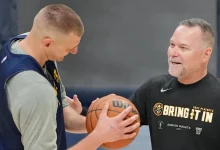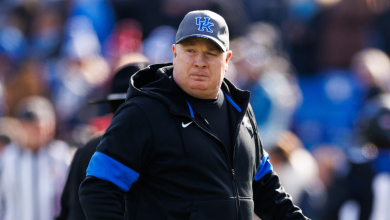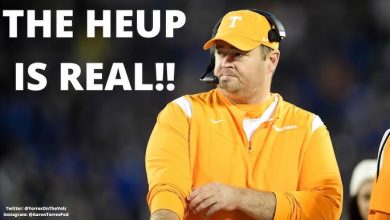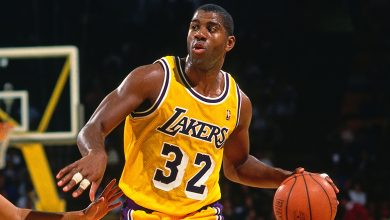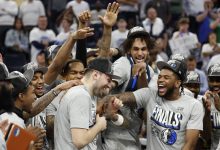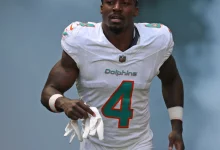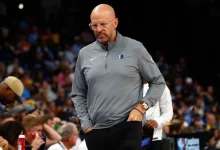The Vikings are expected to choose in the top 100 again because to Kirk Cousins’ compensatory pick.
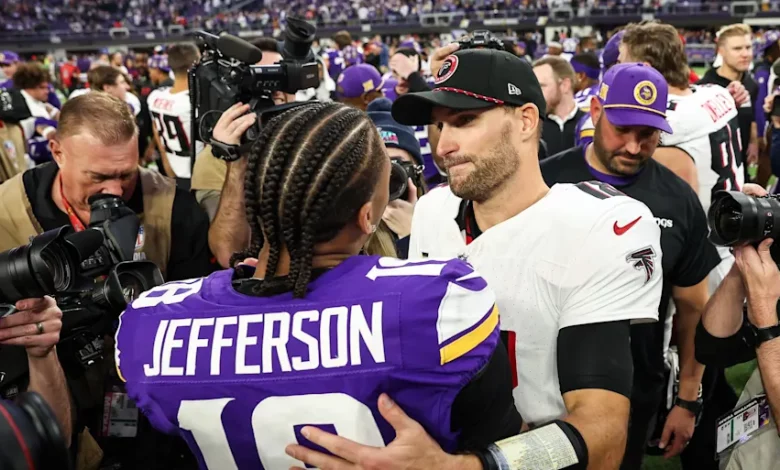
In the ever-evolving world of the NFL, the draft plays a pivotal role in shaping the future of teams. For franchises like the Minnesota Vikings, each draft selection presents an opportunity to build upon the foundation of their roster, whether that’s through securing high-impact players in the early rounds or finding hidden gems in later rounds. As the Vikings prepare for the upcoming NFL Draft, there’s a particularly intriguing development that will influence their strategy: they are expected to have a pick within the top 100 again, thanks to the compensatory pick they will receive for the departure of former quarterback Kirk Cousins.
Understanding Compensatory Picks and Their Impact
Compensatory picks are a unique feature of the NFL Draft, designed to help balance out the player movement during free agency. When a team loses an unrestricted free agent who is signed by another team, that team can potentially receive a compensatory pick, depending on the terms of the free agent’s contract and other factors. These picks are awarded at the end of the third through seventh rounds, with teams receiving them based on the value of the player they lost.
For the Minnesota Vikings, the compensatory pick for Kirk Cousins is expected to land them a selection within the top 100. This pick represents an important opportunity for the Vikings to add more talent to their roster, enhancing their chances of long-term success. The team will have an additional asset in a draft that is already filled with important decisions.
Kirk Cousins’ Impact on the Vikings’ Future
Kirk Cousins’ tenure with the Minnesota Vikings was a rollercoaster of highs and lows. Since joining the team in 2018, Cousins was expected to be the quarterback who would take the Vikings to the next level, elevating them from a solid playoff team to a legitimate Super Bowl contender. While Cousins certainly had impressive individual seasons and played well statistically, his tenure was ultimately defined by the team’s inability to break through in the postseason, leading to questions about his long-term fit in Minnesota.
Cousins’ departure has had a ripple effect on the Vikings, not only in terms of their quarterback situation but also in terms of the compensatory pick that the team is expected to receive. The compensatory pick they are slated to acquire as a result of Cousins’ move is significant because it gives the Vikings additional draft capital at a time when they need to address several key roster needs. While Cousins’ exit from Minnesota marked the end of an era, the compensatory pick serves as a reminder of the financial and player movement mechanisms that shape the NFL.
The Vikings’ Draft Strategy and Needs
As the Vikings prepare to enter the draft with a valuable pick in the top 100, the front office will need to carefully evaluate the team’s needs, as well as the players available in the draft pool. The team’s draft strategy will likely be influenced by several key factors, including their current roster, the performance of their existing players, and their broader long-term vision for success.
1. Quarterback Position: A Long-Term Solution
One of the most pressing questions facing the Vikings’ front office is the long-term future of the quarterback position. While the team is currently led by veteran Kirk Cousins’ successor, there is a strong likelihood that the Vikings will use their draft capital to secure a young quarterback to develop behind Cousins or his successor.
The Vikings’ compensatory pick, combined with their regular draft picks, gives them the opportunity to pursue a quarterback prospect who can be molded into the team’s leader for the next decade. The Vikings may decide to target a young quarterback who is capable of stepping in immediately if the team feels that Cousins’ successor is not yet on the roster. On the other hand, they may look to draft a quarterback with a more developmental focus, one who can learn behind a veteran and eventually take over the reins when the time is right.
In either case, the Vikings will have the opportunity to secure a promising signal-caller, providing them with a solid foundation at the most important position in football.
2. Offensive Line: Bolstering the Front Five
Another area of concern for the Vikings is the offensive line. While the Vikings have invested in their offensive line over the years, there is still a need for improvement, particularly in terms of protecting the quarterback and establishing a strong running game. With Dalvin Cook in the backfield and a talented receiving corps, the Vikings’ offense has the potential to be high-powered, but it must be able to execute consistently without the threat of pressure from opposing defenses.
The top 100 pick provides an opportunity for the Vikings to target an offensive lineman who can step in and contribute immediately. Whether it’s a tackle to shore up the protection on the outside or a guard to improve the interior line, selecting a player with the physical tools and technical skills to succeed at the next level would be a major step toward improving the overall efficiency of the offense.
Given the high priority of protecting their quarterback and ensuring that their skill players can perform at their best, the Vikings could very well look to bolster their offensive line with this valuable draft pick.
3. Defensive Depth: Strengthening the Secondary
While the Vikings have a solid defense, they still have areas that need improvement, especially in the secondary. With the growing importance of high-flying, pass-heavy offenses in the NFL, having a deep, versatile secondary is crucial for success in the modern game. Whether it’s finding a ball-hawking cornerback or a playmaking safety, the Vikings may use their top 100 pick to add talent to their defensive backfield.
The Vikings’ defense has shown flashes of brilliance, particularly with the pass rush, but consistency has been an issue at times. A dynamic cornerback or safety could help strengthen their defense against some of the league’s top quarterbacks, particularly in a high-stakes playoff environment. With their compensatory pick, the Vikings could also potentially target a defensive player who can step in and contribute early, providing an immediate impact in the secondary.
4. Wide Receiver Depth: Adding Playmaking Talent
While the Vikings boast one of the most talented wide receivers in the league in Justin Jefferson, the depth of the receiving corps behind him could be improved. Adding another dynamic playmaker could provide Cousins’ successor with a strong group of weapons to work with, making the offense even more potent. With the Vikings’ compensatory pick within the top 100, the team could take a chance on a wide receiver with big-play potential to complement Jefferson’s elite skills and provide an additional dimension to the passing game.
By adding a wide receiver who can contribute immediately and grow alongside their young quarterback, the Vikings could set themselves up for sustained success. Whether it’s a speedy deep threat, a physical possession receiver, or a well-rounded route runner, the right addition to the receiving corps could further enhance the Vikings’ offensive attack.
The Value of the Compensatory Pick for the Vikings
For the Minnesota Vikings, having a pick in the top 100 is a valuable asset. The compensatory pick offers the team the flexibility to address one of several key areas of need, while also providing an opportunity to strengthen the roster with young, affordable talent. The pick will give the Vikings the chance to be strategic in how they approach the draft, targeting players who can make an immediate impact while also providing long-term value to the team.
In addition to the tangible impact of the pick itself, the compensatory selection reflects the broader impact of Kirk Cousins’ departure. While Cousins’ exit marked the end of a chapter for the Vikings, it also set the stage for a new beginning, as the team will be able to utilize the resources gained from his departure to continue building for the future.
The Bigger Picture: Future Draft Capital
Looking beyond the current draft, the Vikings are poised to be in a favorable position to continue adding talent in future years. The compensatory pick represents not just an immediate opportunity but also the long-term planning that is vital for any franchise that hopes to sustain success. The Vikings’ ability to continue building through the draft, coupled with their compensatory selections, could be the key to developing a balanced, well-rounded roster capable of competing for championships in the years ahead.


